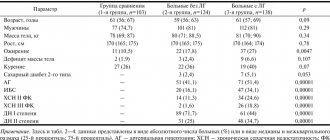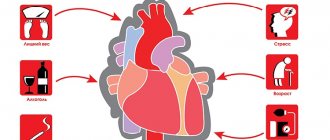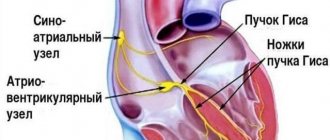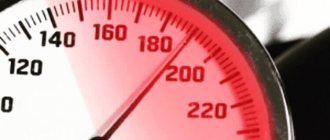Vascular crisis is a pathological condition that is characterized by a sharp change in the blood supply of blood vessels along with disruption of peripheral and central circulation. “Crisis” itself means a sudden manifestation of pathology, therefore it always develops acutely, in the form of some kind of attack or attack. In most cases, this condition requires emergency medical care for the patient. In accordance with the focus of the lesion, temporal, brainstem and hypothalamic crises are distinguished.
Also, there are two main groups of vascular crises - systemic and regional. Systemic crises are divided into hypertensive, hypotonic and vegetative-vascular. This category is distinguished by its clinical manifestation: they are characterized by changes in the total capacity of the peripheral veins or the total peripheral resistance to blood flow. Such crises are accompanied by a deviation from normal blood pressure values (increase or decrease). Patients often experience symptoms of secondary cardiac failure. Let's take a closer look at each type of systemic vascular crisis separately:
- hypertensive. It is characterized by an increase in both systolic and diastolic blood pressure. In this case, the patient develops a headache (usually of a pulsating nature), noise in the ears, and “spots” before the eyes. The skin of the neck and especially the face becomes hyperemic and reddened with injected sclera. Hemorrhages in the sclera of one eye are possible. During movements, these symptoms increase even more. With emotional stress, a feeling of nausea and vomiting, rapid heartbeat, a feeling of lack of air, and pronounced pain in the heart area may appear;
- hypotonic. This pathology is characterized by a sharp drop in both systolic and diastolic blood pressure. In this case, the patient experiences dizziness, a feeling of nausea, trembling in the upper extremities, increased sweating and general weakness of the body. Often people are tormented by constant noise and ringing in the ears, the skin becomes paler;
- vegetative-vascular. This is a large category, divided into four types. The sympathetic-adrenal type appears against the background of a sharp increase in adrenaline and activity of the sympathetic department of the central nervous system. This type is characterized by pronounced symptoms: headaches and anxiety appear, heartbeat and pulse increase. The upper and lower extremities become cold. The vegetative-vestibular type occurs in the following diseases of the central nervous system - acute cerebrovascular accident and encephalopathy. Patients experience a feeling of nausea and dizziness, loss of space. The vago-insular type is directly related to the influence of the parasympathetic part of the central nervous system. Patients experience tinnitus, vomiting, increased sweating and general weakness of the body. The hyperventilation type is characterized by a lack of air, which is accompanied by severe shortness of breath. In this case, the patient experiences tachycardia and increased sweating.
Regional crises are divided into cerebral crisis, angioedema, angiotrophoneurosis and migraine. All of them correspond to localized disturbances in the blood supply to a tissue or organ. With high systolic or diastolic pressure, there is a significant decrease in blood flow to the organ or a complete cessation. In the case of arterial hypotension, the blood flow to the organ is exceeded. Patients are diagnosed with stagnation of blood in the veins. Let's take a closer look at each type of regional vascular crisis separately:
- cerebral crisis. This pathology is preceded by atherosclerotic changes in the blood vessels of the brain. Cerebral crisis manifests itself in the form of headache, vestibular disorders (dizziness, nausea), and impaired fine motor skills. Some patients experience memory disorders, loss of space, the appearance of “floaters” before the eyes, and increased agitation. This may increase sensitivity to bright lights and loud sounds. In especially advanced clinical cases, patients begin to experience deviations from the mental system; they try to be in complete solitude and silence, since any sounds provoke a headache. Cerebral crisis can be primary or secondary. Primary pathologies arise against the background of organic brain damage due to a disorder of the regulatory centers of the functional systems of the body. Secondary pathology occurs as a result of disturbances in the functioning of the nervous system;
- angioedema. This type of regional vascular crisis, as a rule, appears under conditions of increased release of a large number of neurotransmitters (in particular, serotonin). In such a clinical situation, slight edema (swelling) appears in specific areas of the skin and mucous membranes, and part of the organ may be slightly increased in size. With angioedema there is no itching and discoloration of the skin, which makes it possible to differentiate it from a local vascular crisis;
- angiotrophoneurosis (Raynaud's disease). This type of vascular crisis is the most rare. Based on statistics, women are 4 times more susceptible to the disease than men. Patients experience a rapid change in spasm in a specific area of the body (usually the upper extremities). The appearance of angiotrophoneurosis is associated with a violation of innervation. As the pathology progresses, dystrophic changes appear in the tissues, cyanosis and swelling of the extremities are noted, and trophic ulcers may develop;
- migraine. It is one of the most popular variants of regional vascular crisis (30% of all cases). As a rule, the disease begins at a young age – 20-25 years. In this case, pronounced perivascular edema of the brain tissue is noted. The headache is sharp and dull, and may be accompanied by a feeling of nausea and general weakness of the body. Some patients experience pulsating pain in one half of the head. The disease is accompanied by increased irritability. There are three phases of migraine. The duration of the first is about 20-30 minutes, characterized by the absence of severe painful sensations. In the second phase, a throbbing headache appears. The final (third) phase is characterized by the appearance of perivascular edema and dull pain.
Classification
Vegetative crisis does not have a single classification. It is usually divided into types, which have varying degrees of severity and symptoms, which in turn are related to blood pressure readings and the functioning of the cardiovascular system.
Vegetative crisis is divided into several types with varying degrees of severity. The lung is characterized by short attacks of 10-15 minutes, with pronounced disorders of the autonomic system and manifestations of a monosymptomatic nature, with no post-crisis asthenia. Attacks of moderate severity can last from 15-20 minutes to an hour, while there are polysymptomatic manifestations and post-crisis asthenia, which last for 24-36 hours. During a severe attack, a combination of polysymptomatic crises is observed along with convulsions and hyperkinesis; this condition lasts more than one hour and is accompanied by multi-day asthenia.
Based on symptoms, vegetative crisis is divided into: vagoinsular, sympathoadrenal and mixed.
Diagnosis of somatoform disorder (autonomic dysfunction, VSD)
The Clinic of Minimally Invasive Neurosurgery is the only clinic offering a unique method of complex treatment of VSD. To help you, we set ourselves the task of finding and treating the causes of vegetative-vascular dystonia. Therefore, treatment in our clinic brings results. Treatment of VSD involves two stages: diagnostic and therapeutic.
The syndrome of somatoform disorder (autonomic dysfunction, VSD) with neuroses occurs in 50% of cases. Neuroses as diseases belong to borderline conditions and are the competence of psychiatrists. Meanwhile, patients with somatoform disorder (vegetative dysfunction, VSD), especially at the first visit, visit a neurologist, who must promptly and correctly resolve the issue of whether the syndrome of vegetative-vascular dystonia (VSD) belongs to a specific disease, including the type of neurosis.
Diagnosis of somatoform disorder (autonomic dysfunction, VSD) consists of three stages:
1. A complete neurological and psychotherapeutic examination and assessment of the results of your previous studies, if any.
2. During the treatment process, a diagnosis of the functional systems of the body will be carried out, which allows: to determine the level and reserves of cardiovascular, autonomic and central regulation, as well as to evaluate deviations of these indicators from the norm in VSD:
- assess the level of compensation of the body’s energy resources at various levels of regulation
- evaluate the effectiveness of various methods of therapy when carrying out treatment and preventive measures
- issue a comprehensive medical report and necessary recommendations for VSD
- choose a regimen and optimize various treatment methods
- control and forecast of functional state indicators during the rehabilitation period
- identification of patients in need of additional clinical examination in specialized medical institutions
- identification of cancer patients, including in the early stages of the disease
- control and prognosis of psychophysical state in conditions of neuro-emotional stress and monotonous work
- individual selection of optimal means of recovery for fatigue and chronic overstrain: vitamin balance, normalization of sleep, etc.
- assess the level of self-regulation of the body during VSD
3. Diagnostic consultation with a psychotherapist.
We strive to reduce costs for our patients, but we do not skimp on diagnostic and treatment procedures if they are truly necessary.
Somatoform disorder (autonomic dysfunction, VSD) in the treatment complex may require the prescription of homeopathic remedies.
If you frequently experience the following symptoms:
- dry skin or sweating
- paroxysmal states and crises
- “panic attacks” accompanied by rapid heartbeat, difficulty inhaling/exhaling
- unmotivated increase in blood pressure
- pale skin
- strong feeling of fear
- feeling of suffocation
- sleep disorder
- increase in body temperature
- fainting, accompanied by a feeling of heat, lightheadedness, slow heartbeat, changes in blood pressure, red spots on the skin, etc. then you need to consult a neurologist and psychotherapist.
Symptoms
A vegetative crisis most often first appears at a certain age - usually 20-30 years. But there have been cases of the disease being diagnosed in children under 15 years of age and elderly people after 65. The main category of people exposed to attacks of vegetative crisis are women. In men, this disease is diagnosed 2-3 times less often than in the fairer sex. During panic attacks, the following clinical picture usually emerges: ⅔ of all symptoms are vegetative, the rest are emotional-affective disorders. Each type of vegetative crisis has its own symptoms, they depend on the severity of the panic disorder and are determined using a special scale.
The following symptoms are characteristic of a sympathoadrenal crisis: disruption of the heart and rapid heartbeat, pain and pulsation in the head, fever, pale skin, chills, an inexplicable feeling of fear. It ends suddenly, with a large amount of urine being released. After this, an asthenic state begins to develop.
Symptoms of a vagoinsular crisis are as follows: a person begins to feel a lack of air, he has a feeling of suffocation, shortness of breath, the pulse becomes rare, the heart works intermittently, the skin becomes hyperemic, pain appears in the stomach, intestinal motility increases, etc.
The mixed type of vegetative crisis combines the characteristics of the species described earlier, i.e. sympathoadrenal and vagoinsular types. The main symptoms of a vegetative crisis of this type are attacks of causeless panic, anxiety or fear, to which are added several manifestations of a particular disease. In this case, human psychosomatics produces such sensations as depersonalization, derealization, fear of uncontrollable actions, loss of reason, and fear of death.
Various reasons can lead to the onset of a vegetative crisis in a person. It can be the result of prolonged stress or neurosis, postpartum trauma, or head trauma. A vegetative crisis can also be caused by disturbances in the functioning of the central nervous system, and conditions such as premenstrual syndrome in women, urolithiasis, puberty, etc. Uncontrolled use of any medications can also provoke this disease.
Vegetovascular dystonia with panic attacks
A panic attack is an episodic manifestation of anxiety that begins suddenly for no apparent reason in patients suffering from VSD. The attacks last from a minute and can last an hour. Sometimes panic attacks occur periodically several times a week, or may not make themselves felt for a long time.
A panic attack during VSD is manifested by extremely pronounced anxiety (panic). It is accompanied by fear of death, self-control, loss of consciousness, fear of going crazy and pronounced vegetative symptoms:
- Increased sweating;
- Accelerated heartbeat;
- Chest pain;
- Nausea;
- Feeling hot or chilly;
- Dizziness;
- Discomfort in the abdomen;
- Trembling hands.
The symptoms of a panic attack can vary from person to person. The attack begins suddenly and lasts from several minutes to several hours. Panic attacks can be associated with a certain situation, environment, place, and arise spontaneously, regardless of external circumstances. The key difference between isolated panic attacks in VSD and panic disorder is the absence of the formation of fear of anticipation of a new panic attack and protective behavior - avoiding situations and places in which a panic attack has already occurred.
Diagnosis and treatment
Diagnosing a vegetative crisis in modern medicine does not pose any particular difficulties. The most important thing is to exclude serious mental, somatic or endocrine diseases.
There are three diagnostic criteria for a vegetative crisis:
- Time limitation and paroxysmal nature
- Presence of multisystem disorders of the autonomic system
- Presence of states of emotional and affective nature
Modern medicine uses a variety of measures to treat vegetative crisis: psychotherapeutic, pharmacological and psychosocial. The best and most effective way to treat this disease is considered to be taking psychotropic medications coupled with psychotherapy sessions.
Difference from sympathoadrenal crisis
Acute disorders of the autonomic nervous system include sympathoadrenal and vagoinsular crisis. These pathological conditions differ from each other in the mechanism of development and clinical signs. In both cases, urgent medical attention is required, since each of these conditions can lead to death. Sympathoadrenal crisis is characterized by a sharp increase in the level of hormones of the adrenal cortex. They cause stimulation of the central and autonomic nervous system. The release of adrenaline is accompanied by tachycardia, increased blood pressure and a feeling of anxiety and fear. Another name for this pathology is a panic attack.
In contrast to sympathoadrenal crisis, when insulin levels in the blood increase, the opposite symptoms are observed. The parasympathetic nervous system begins to dominate over the sympathetic department. There is a slowdown in the heart, relaxation of blood vessels, narrowing of the bronchi, etc.
Consequences and forecasts
If attacks of a vegetative crisis are not stopped in a timely manner, the consequences can be very disastrous and severe. The patient’s memory records the experienced attack for a long time, and the person begins to fear a repetition (the so-called “expectation syndrome”). The patient begins to avoid places that are potentially dangerous for himself, and those situations that are fraught with an attack. This leads to changes in his behavior, mental disorders, and the formation of phobias. If a person asks for help in time, the forecasts are very positive. Competent and adequate treatment of a vegetative crisis will prevent recurrence of attacks, and, consequently, the onset of serious consequences.
Primary appointment with a neurologist: 1850 RUR.
Sign up Online 5% discount when registering from the site
Diagnosis of vascular crisis
If any of the above symptoms appear, it is important to consult a doctor for a thorough examination. During the initial examination, the doctor collects and studies the medical history in detail, asks about when the negative symptoms appeared, how long they lasted, and whether his closest relatives had similar ones. The patient's blood pressure is measured. If he experiences frequent surges in blood pressure, it is recommended to keep and have with him a diary with these indicators.
Diagnosis of vascular crises consists of checking for signs of acute disturbance of general or regional hemodynamics. The diagnosis is made only after excluding the connection of the signs with organic pathology of the heart or blood vessels. In the case of cerebral vascular crisis, it is necessary to exclude hemorrhagic and ischemic strokes. In the case of hypertensive cardiac crisis, exclude myocardial infarction.
Laboratory diagnosis is usually not required. Testing is prescribed if an inflammatory process, diabetes mellitus or other serious pathology is suspected. In such a situation, the patient is prescribed a general and biochemical blood test. Changes in laboratory parameters can reflect the course of pathology, which acts as the main factor in the development of hypertension or other concomitant disease. Among the instrumental diagnostic methods the following may be prescribed:
- electrocardiography. This is an accessible technique that does not require additional preparation. Its peculiarity is the recording of electrical potentials of a muscle organ, which makes it possible to detect changes in rhythm, electrolyte deficiency and other initial symptoms of vascular diseases;
- ultrasound examination of the heart. Using ultrasound, specialists can visually determine contractions of the heart muscle, diagnose heart failure and other vascular pathologies, the symptoms of which are similar to vascular crisis;
- magnetic resonance imaging of the brain. This study is safe for the body because it does not involve exposure to radiation. MRI makes it possible to detect the lumen and patency of large vessels, various anomalies of vascular development;
- echocardiography. Along with an ECG, specialists may prescribe an echocardiogram to get a complete picture. This technique is characterized by high accuracy; it makes it possible to assess the condition of the muscular organ and determine the size of the valves;
- Doppler ultrasound. Often, patients are prescribed Doppler of the cervical spine and head vessels. This is a highly informative and safe examination that allows you to detect various vascular pathologies. There are no contraindications to Doppler ultrasound and it is not accompanied by side effects. Dopplerography includes ultrasound examination of the carotid arteries, vertebral arteries and main arteries of the brain. This diagnosis is especially important for regular dizziness, loss of space, the appearance of “floaters” before the eyes and other similar symptoms of vascular crisis. With its help, specialists evaluate blood flow in the vessels of the head.
Vagoinsular crisis: treatment of the disease
To stop paroxysm, symptomatic treatment is prescribed. Drugs are prescribed to restore cardiovascular activity, increase blood pressure, and relieve shortness of breath. Symptomatic therapy for a severe crisis is performed in a hospital. To increase blood sugar levels, a 5% glucose solution is administered intravenously. This helps increase circulating blood volume and raise blood pressure. If cardiac arrhythmias develop, the drug “Cordiamin” is administered. To improve blood circulation in the brain and combat dizziness, the drugs Vestibo and Betaserc are prescribed.
Vagoinsular crisis in young children is most often not accompanied by severe symptoms, in contrast to the paroxysm observed in adults. In most cases, it goes away on its own. A feature of childhood crises is that the attacks are short-lived. On average, an attack lasts about 5 minutes. The child should be given warm sweet tea and calmed down. To prevent paroxysms from recurring, it is necessary to find out the cause of the attack.
First aid in a crisis
If a person’s condition worsens due to stress or overwork, emergency help should be called immediately. Before the doctors arrive, it is necessary to place the patient on his back and calm him down. The top buttons or zipper on the garment must be undone. To ensure the flow of oxygen, you should open the window. If general weakness increases gradually, the patient should be given sweet tea. If vomiting develops, the person is placed on his side to prevent aspiration.
At the prehospital stage, doctors administer a 40% glucose solution intravenously, as well as sedatives. In case of complications, resuscitation measures are performed.









